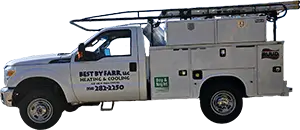In the heat of summer, a malfunctioning air conditioner can quickly turn your home into an uncomfortable sauna. Whether you’re a homeowner or a professional HVAC technician, mastering the art of AC repair is indispensable. Understanding the intricacies of troubleshooting can save you time, money, and frustration. From subtle performance issues to complete breakdowns, every symptom offers clues to the underlying problem. In this blog, we delve deep into the realm of AC troubleshooting, offering expert tips and techniques to diagnose and resolve common issues efficiently. Whether it’s a faulty compressor, a refrigerant leak, or an electrical problem, we’ll equip you with the knowledge and tools needed to tackle any challenge head-on. Join us as we explore the nuances of AC repair, empowering you to keep your cool even in the hottest of summers.
Understanding Common AC Issues: Identifying Symptoms
Understanding the common issues with air conditioning units is the first step in effective troubleshooting. Often, symptoms manifest as subtle changes in performance or noticeable malfunctions. These may include weak airflow, unusual sounds, or inconsistent cooling. By paying attention to these signs, homeowners and technicians can pinpoint underlying problems more efficiently. For instance, weak airflow might indicate a clogged air filter or a malfunctioning blower motor, while strange noises could signify a loose component or failing compressor. Identifying these symptoms early on can prevent minor issues from escalating into major repairs, saving both time and money in the long run.

Essential Tools for Effective Troubleshooting
When it comes to troubleshooting air conditioning systems, having the right tools at your disposal is paramount for accurate diagnosis and efficient repairs. Here’s a look at some essential tools every HVAC technician should have:
- Multimeter: Essential for testing electrical components and circuits.
- Refrigerant leak detector: Detects leaks in the system to prevent further damage.
- Pressure gauge: Measures refrigerant levels for optimal performance.
- Fin combs: Straightens bent fins on condenser coils to improve airflow.
- Coil cleaning brushes: Removes dirt and debris from coils for better heat transfer.
Equipping yourself with these tools ensures that you can tackle any AC issue with precision and confidence, ultimately saving time and ensuring customer satisfaction. So, make sure your toolbox is well-stocked to handle any troubleshooting task that comes your way.
Evaluating Electrical Components: Where to Begin
When troubleshooting air conditioning systems, it’s essential to start by evaluating the electrical components. This includes inspecting the circuit breaker or fuse box to ensure that power is reaching the unit. Next, technicians should examine wiring connections for signs of damage or corrosion and test capacitors, contactors, and relays for proper functionality using a multimeter. Faulty electrical components are a common cause of AC malfunctions, so thorough evaluation and testing of these parts are crucial for accurate diagnosis and effective repairs.
Diagnosing Refrigerant Leaks: Signs and Solutions
Refrigerant leaks can significantly impact the performance and efficiency of an air conditioning system. Identifying these leaks promptly is essential for preventing further damage to the unit and maintaining optimal cooling capacity. Signs of a refrigerant leak may include reduced cooling efficiency, ice buildup on the evaporator coil, or hissing sounds near the refrigerant lines. Once a leak is detected, technicians can use dye tests, electronic leak detectors, or ultrasonic detection equipment to locate the source of the leak accurately. Repairing refrigerant leaks often involves repairing damaged tubing or replacing faulty valves and fittings before recharging the system with the correct amount of refrigerant.
Unraveling the Mystery of Airflow Restrictions
Airflow restrictions in air conditioning systems can lead to reduced cooling efficiency and increased energy consumption, making it essential to unravel their mysteries promptly. By addressing airflow restrictions effectively, homeowners can ensure optimal comfort levels throughout their homes.
- Identify the root cause: Conduct a thorough inspection to pinpoint the source of airflow restrictions.
- Replace air filters: Clogged filters can impede airflow, so regularly replacing them is essential.
- Clean ductwork: Remove dust and debris from ducts to ensure unrestricted airflow throughout the system.
- Clear outdoor unit area: Remove any obstructions around the outdoor unit to allow proper ventilation.
- Ensure proper ventilation: Adequate airflow around the outdoor unit is crucial for optimal AC performance.
Don’t let airflow restrictions compromise your comfort or inflate your energy bills. By following these simple steps and addressing airflow issues promptly, you can keep your AC system running smoothly and efficiently year-round. If you need professional assistance, don’t hesitate to contact your local HVAC technician for expert advice and service.
Tackling Compressor Problems: Causes and Fixes
The compressor is the heart of an air conditioning system, responsible for circulating refrigerant and facilitating the cooling process. When the compressor malfunctions, it can result in a complete breakdown of the system or reduced cooling capacity. Common causes of compressor problems include electrical issues, refrigerant leaks, and mechanical failures. To diagnose compressor problems, technicians may perform electrical tests, inspect refrigerant levels, and evaluate the condition of compressor components. Depending on the nature of the issue, repairs may involve replacing damaged parts, repairing electrical connections, or even replacing the entire compressor unit. Tackling compressor problems promptly is essential for restoring the functionality of the AC system and preventing further damage to other components.

Preventive Maintenance: Proactive Steps to Avoid Future Breakdowns
Regular preventive maintenance is essential for ensuring the longevity and efficient operation of your air conditioning system. By taking proactive steps to address potential issues before they escalate, you can avoid costly breakdowns and ensure optimal comfort in your home or business. Here’s how you can stay ahead with preventive maintenance:
- Regular Filter Replacement: Changing air filters every 1-3 months prevents dirt and debris buildup, ensuring proper airflow and reducing strain on the system.
- Inspect and Clean Ductwork: Periodically inspecting and cleaning ductwork removes obstructions and improves airflow throughout your home, maximizing efficiency.
- Check Refrigerant Levels: Monitoring refrigerant levels and promptly addressing any leaks ensures your AC unit operates at peak performance and avoids compressor damage.
- Lubricate Moving Parts: Lubricating moving parts such as fan motors and bearings reduces friction, extending their lifespan and preventing premature failure.
- Schedule Professional Tune-Ups: Regular tune-ups by a qualified technician include thorough inspections, adjustments, and cleaning, identifying potential issues early and keeping your system running smoothly.
Incorporating these proactive maintenance steps into your routine not only helps avoid unexpected breakdowns but also improves energy efficiency and saves you money on utility bills. Don’t wait for problems to arise—stay proactive and keep your AC system in top condition for years to come.
Conclusion
Mastering AC repair requires a comprehensive understanding of common issues, the right tools, and diligent preventive maintenance. By recognizing symptoms early, such as weak airflow or unusual sounds, homeowners and technicians can address underlying problems efficiently, saving time and money. Equipping oneself with essential tools like multimeters and refrigerant leak detectors is crucial for accurate troubleshooting. Additionally, prioritizing the evaluation of electrical components and promptly addressing refrigerant leaks, airflow restrictions, and compressor problems are vital for optimal system performance. Lastly, proactive preventive maintenance, including regular inspections and tune-ups, is key to avoiding future breakdowns and ensuring long-term efficiency and comfort. For reliable AC services in Cottonwood, AZ, contact Best By Farr LLC at 781 Air Park Way Suite #A4, or call (928) 282-2250 for expert assistance. Keep your cool with proactive AC care!


